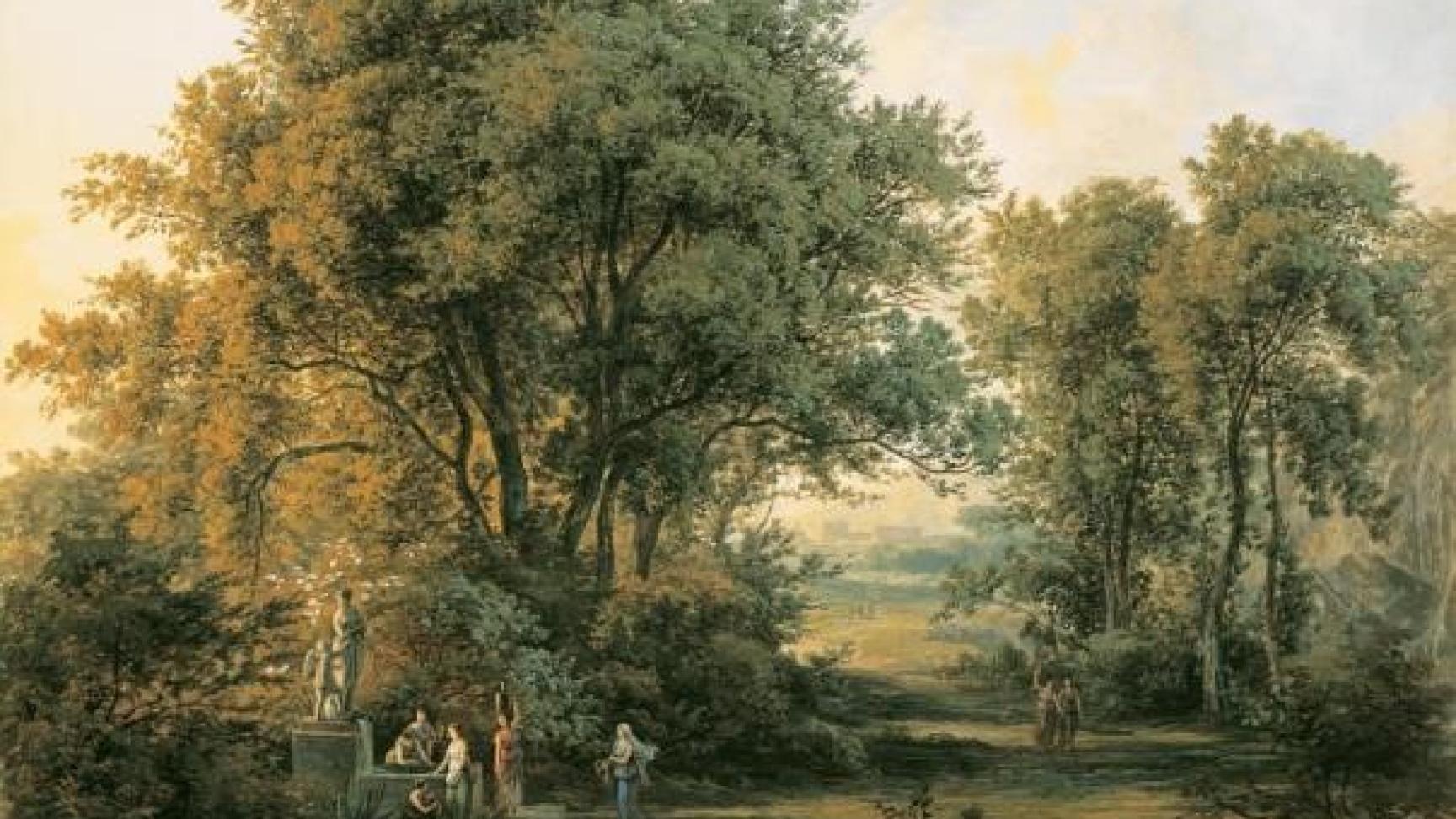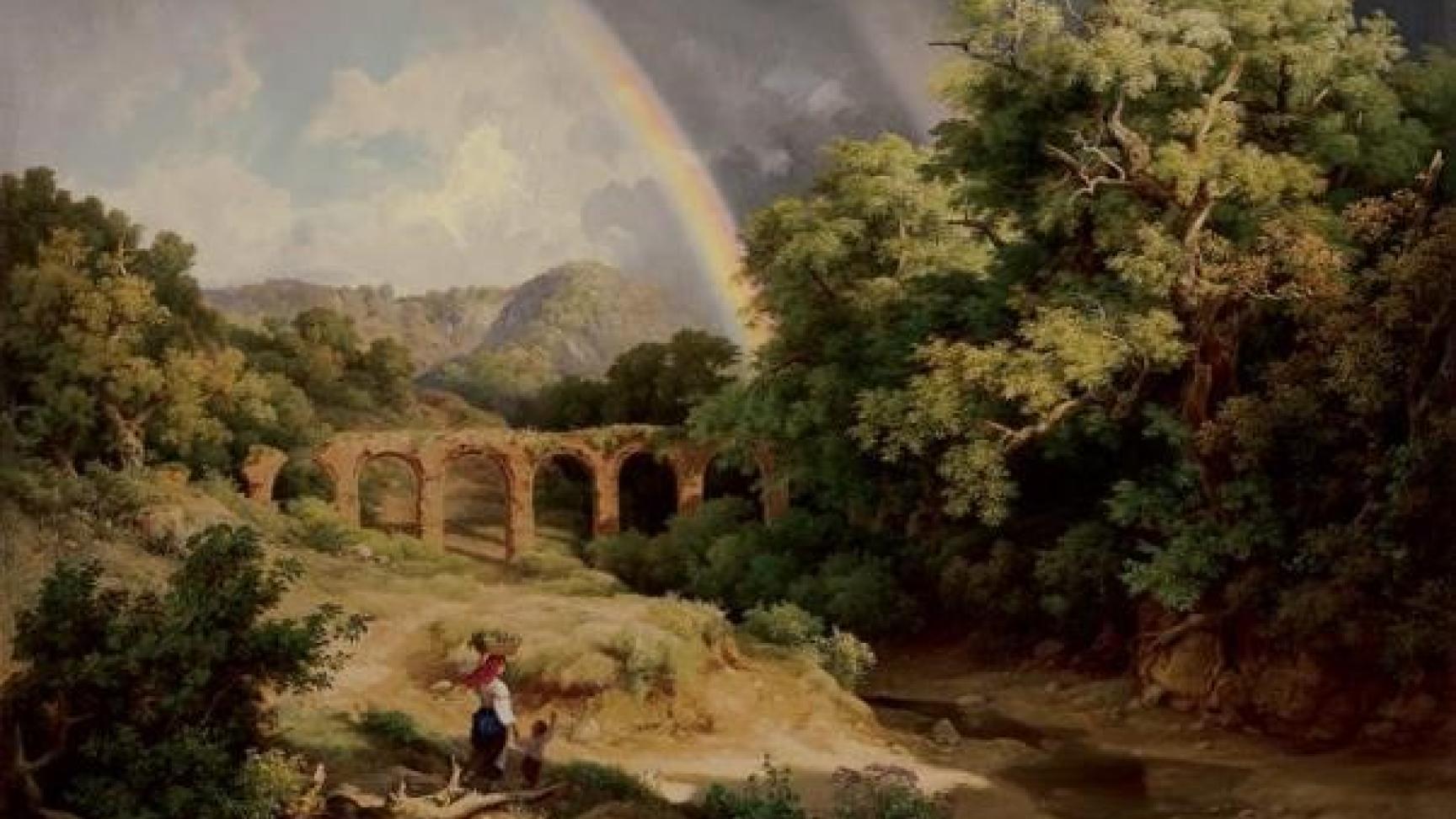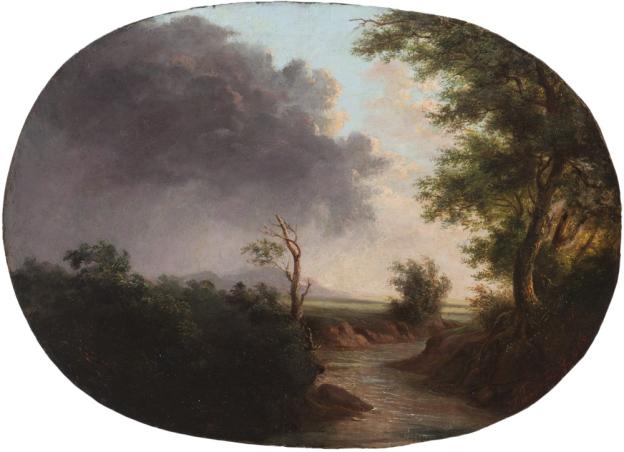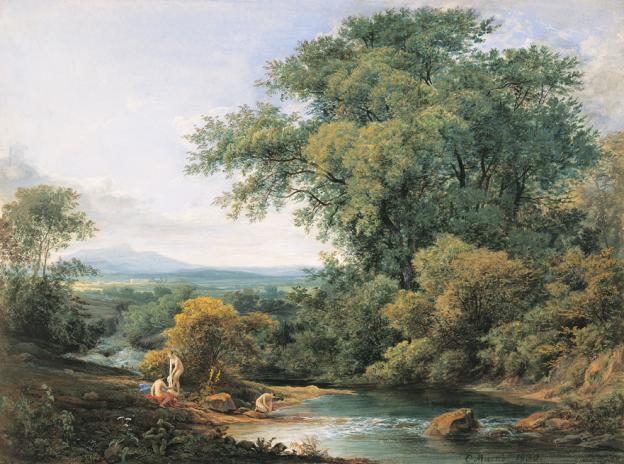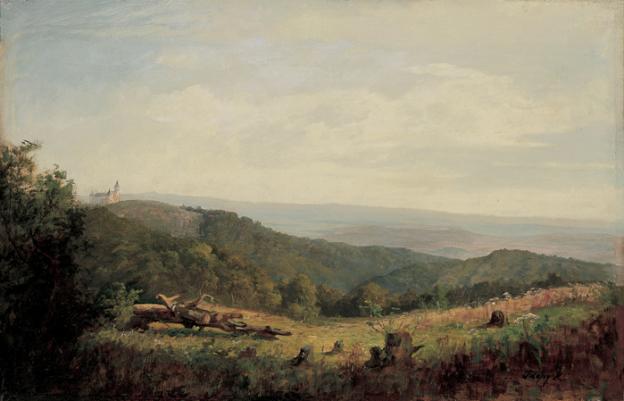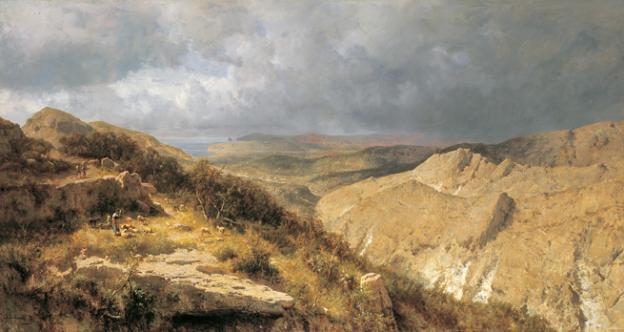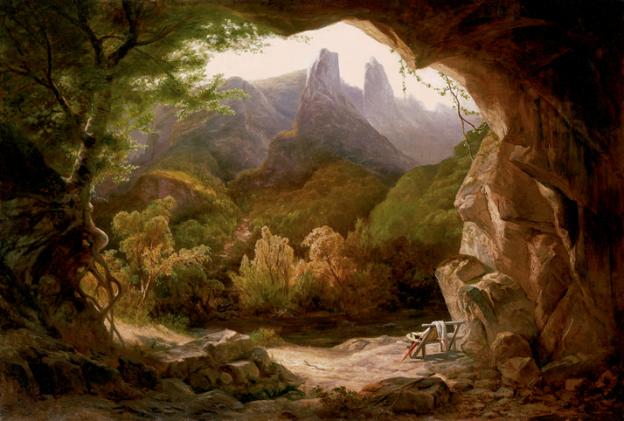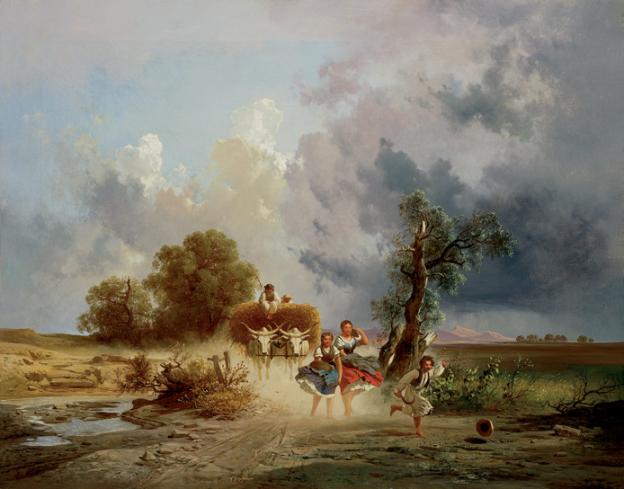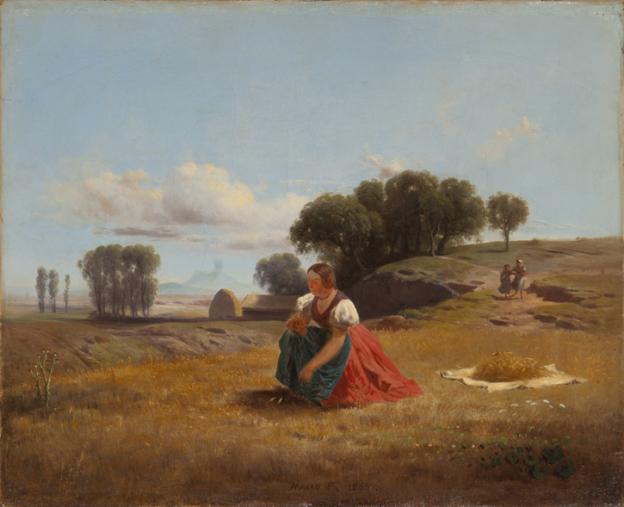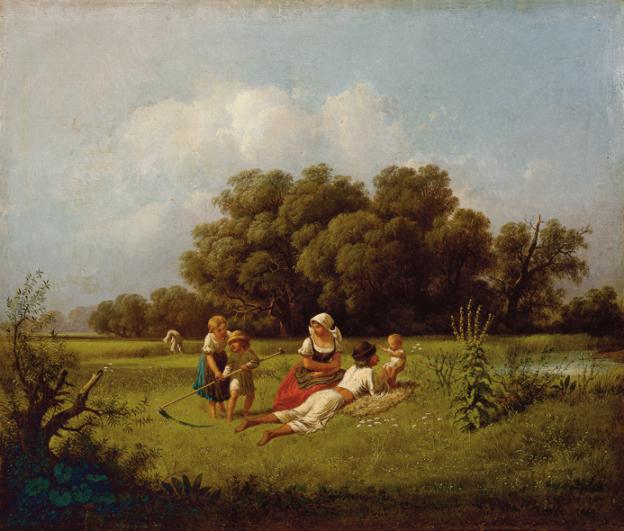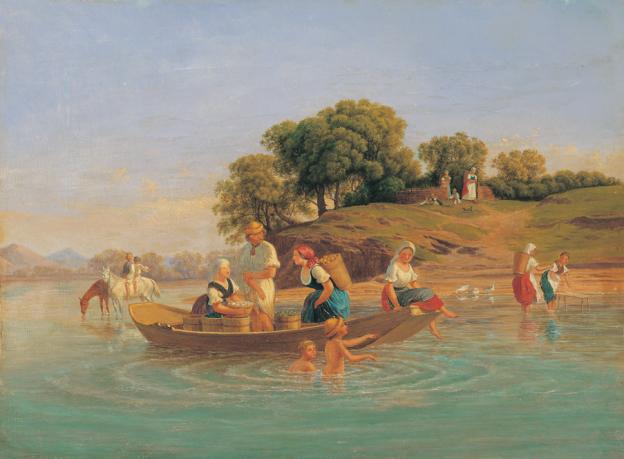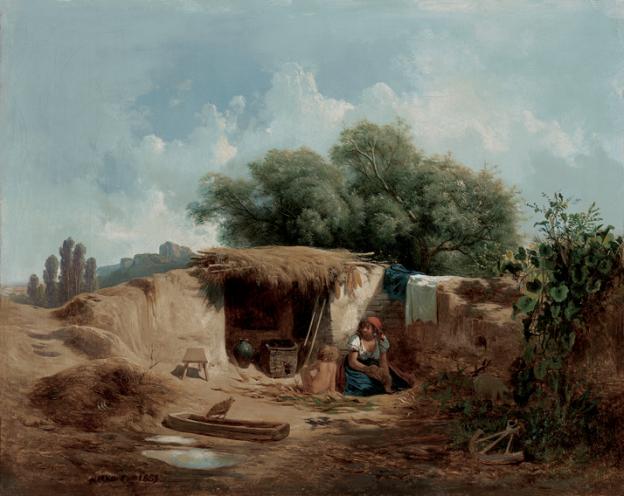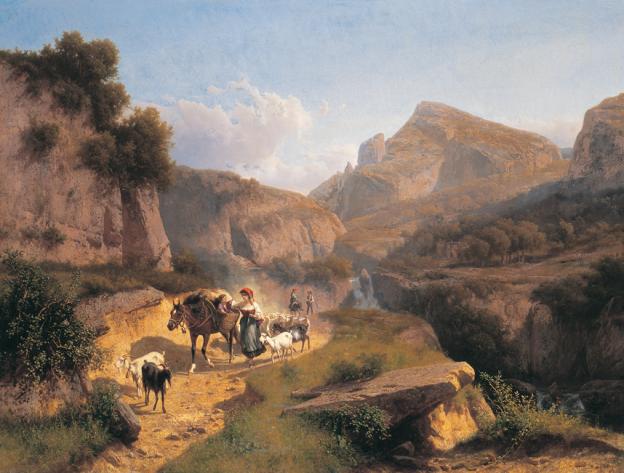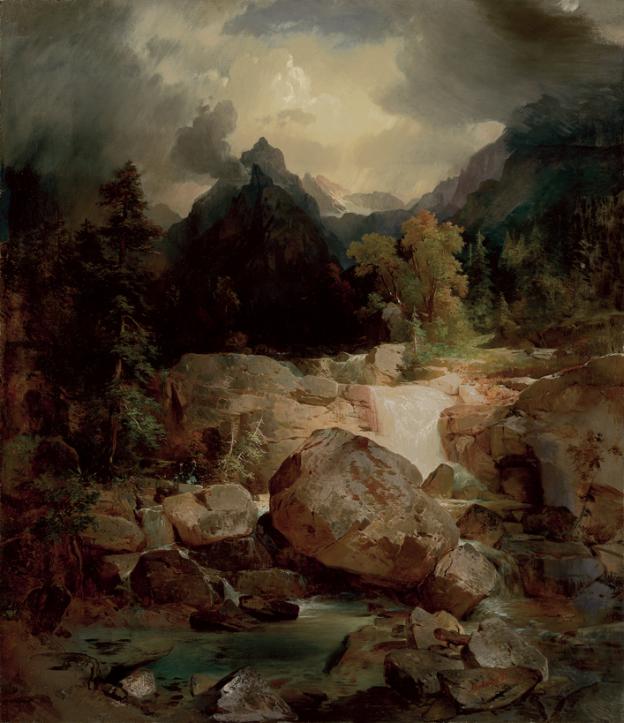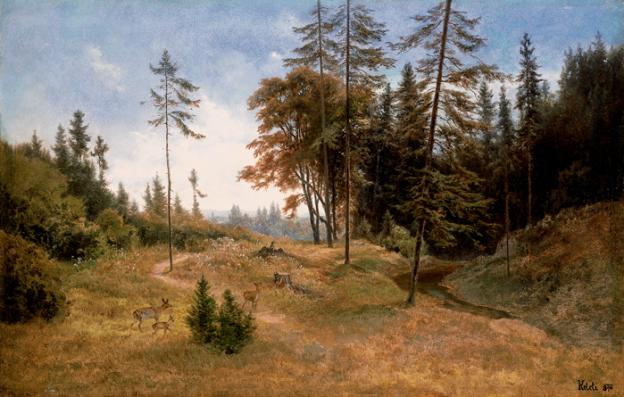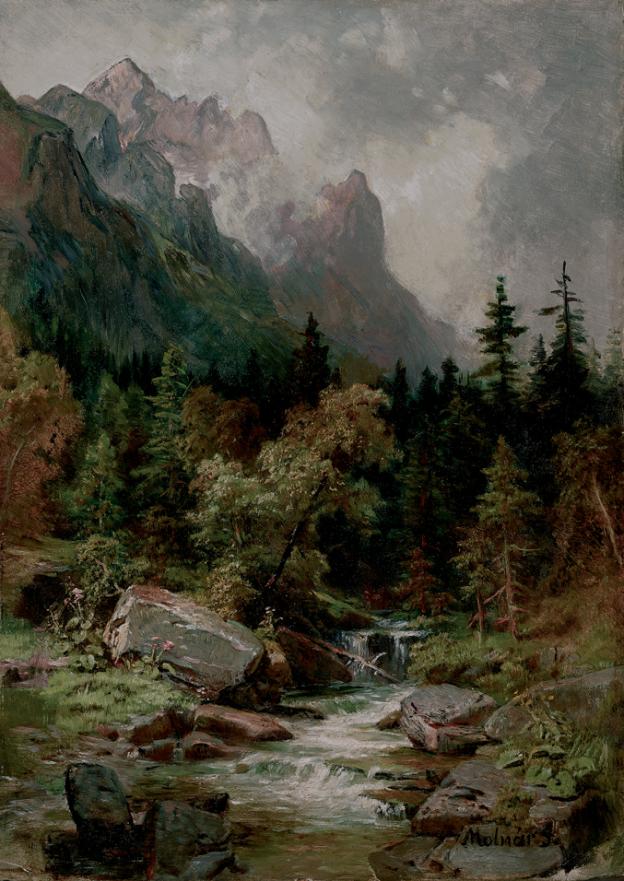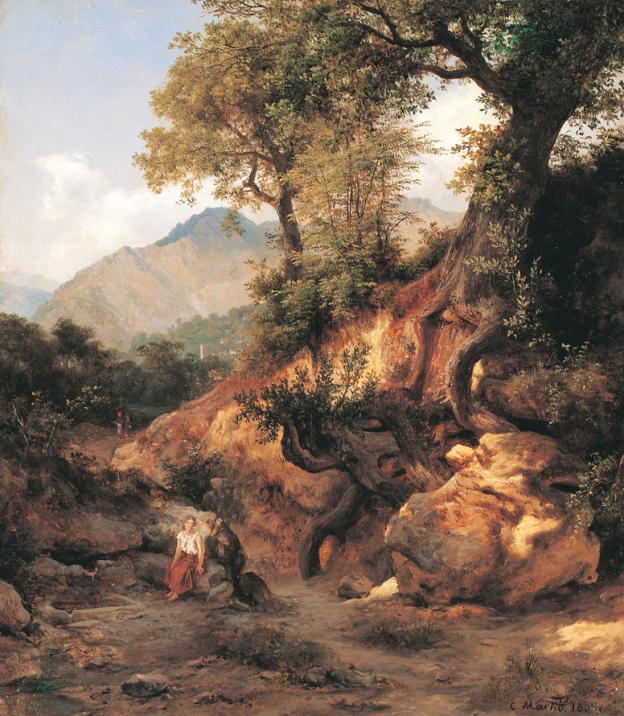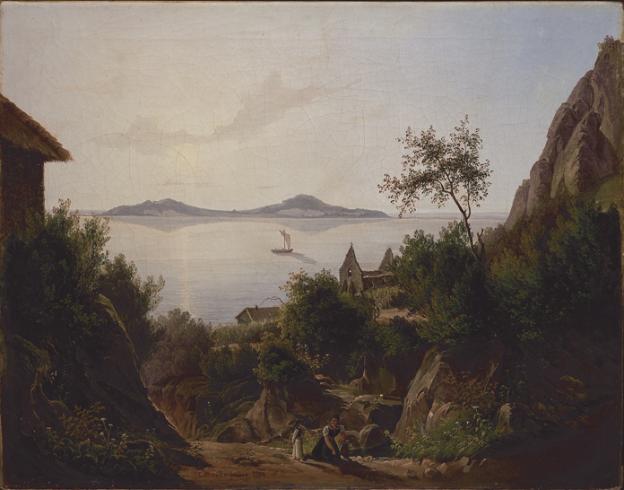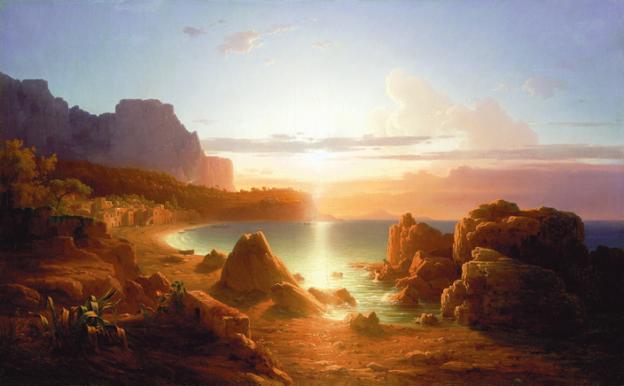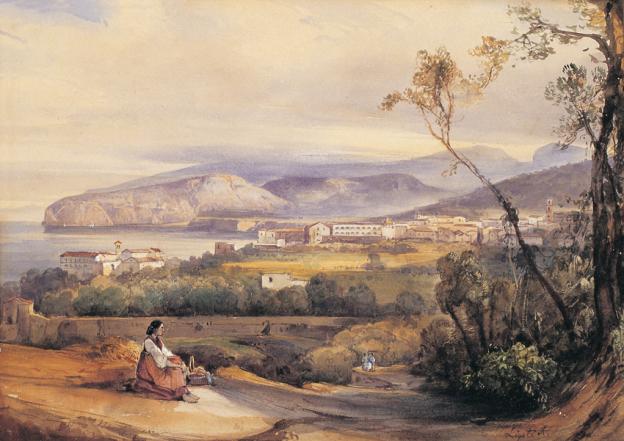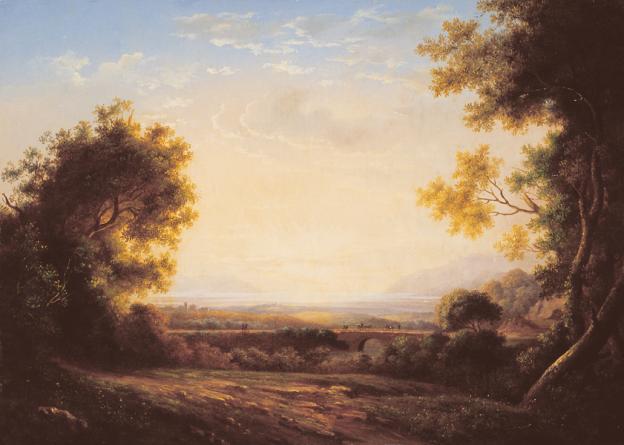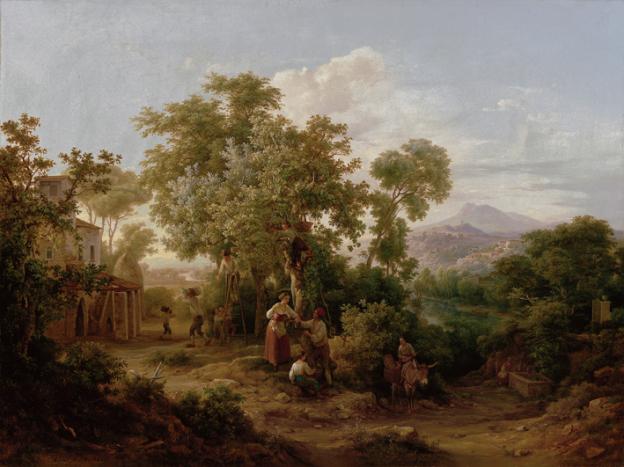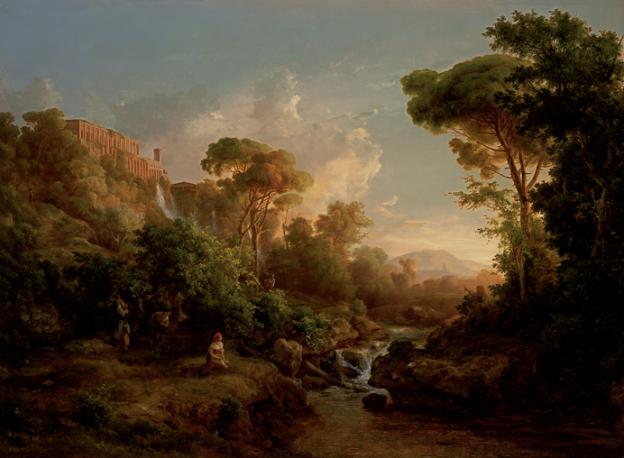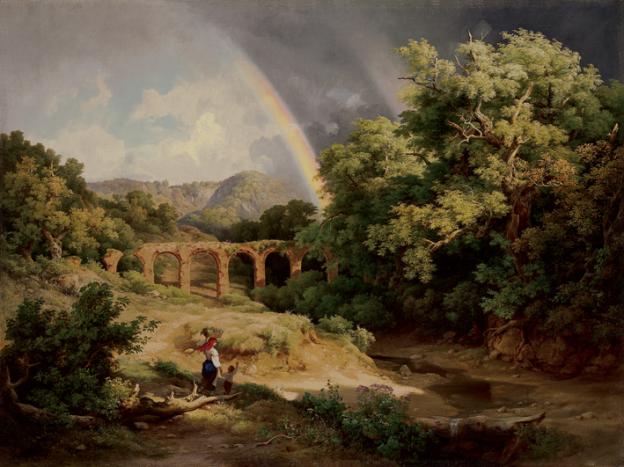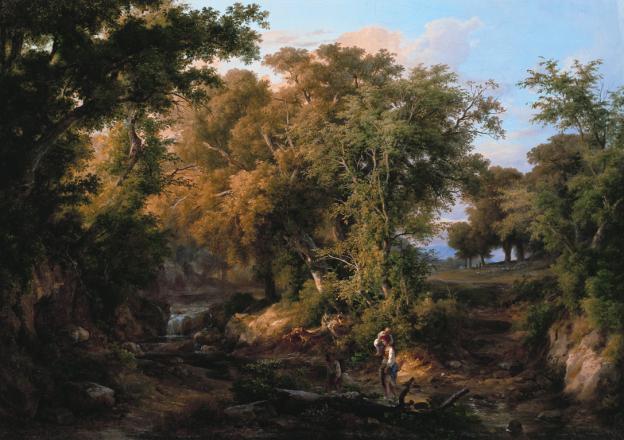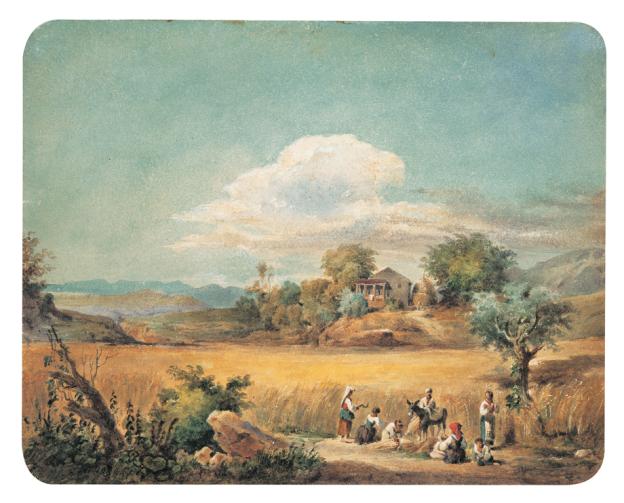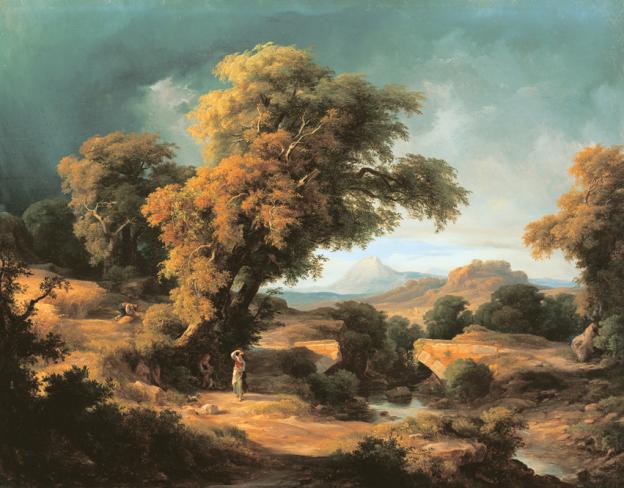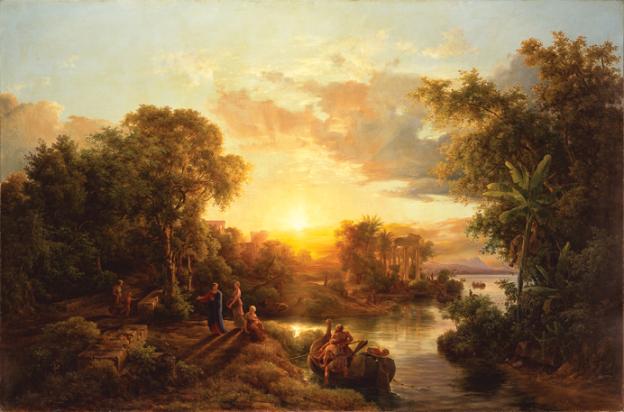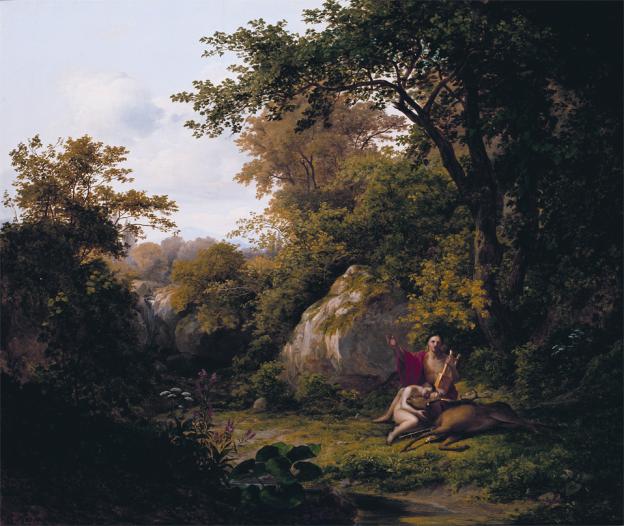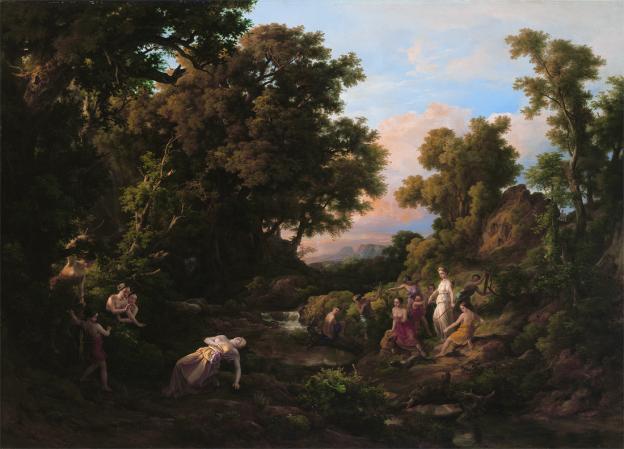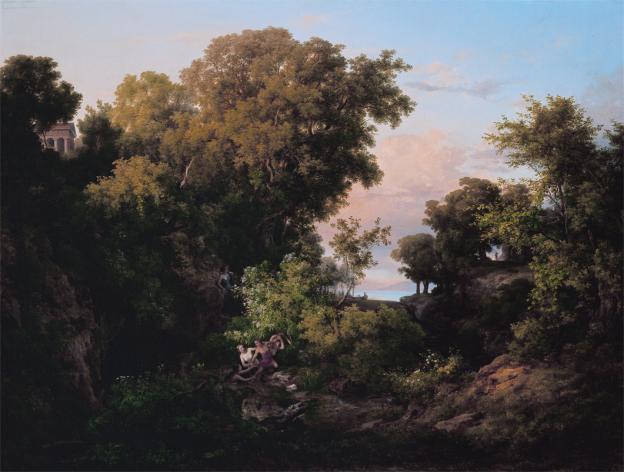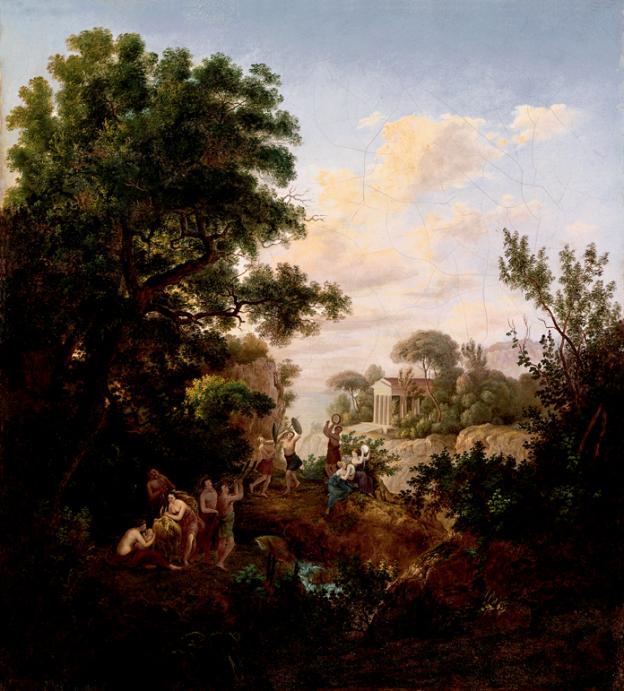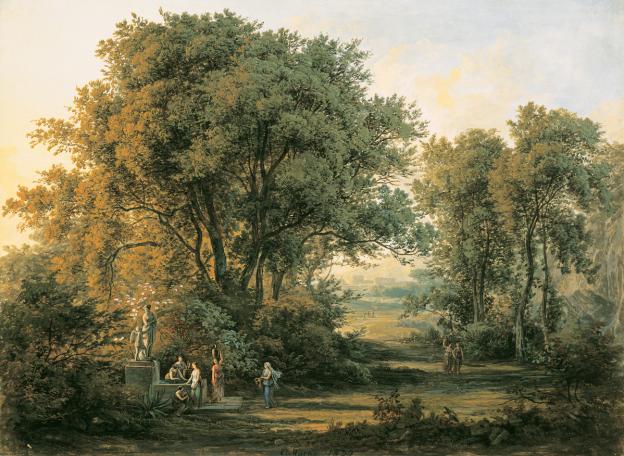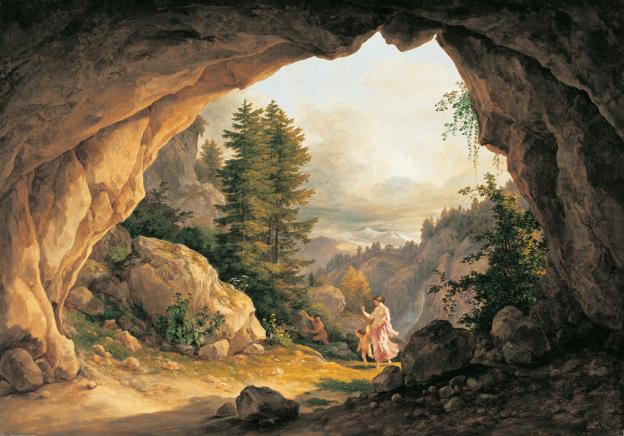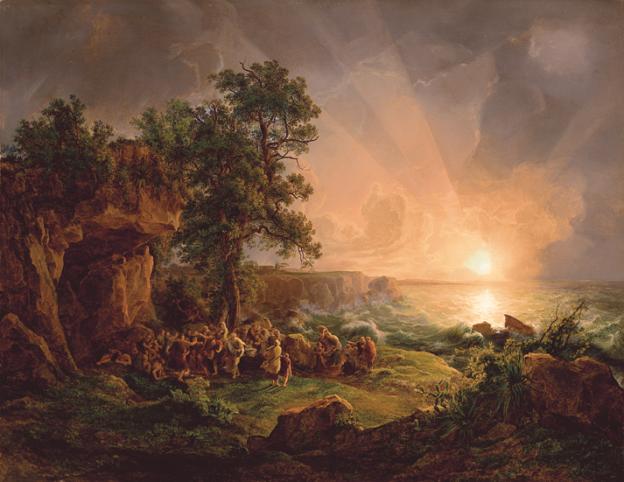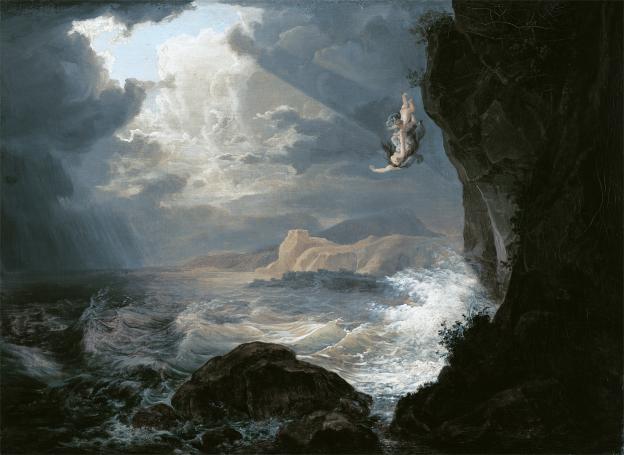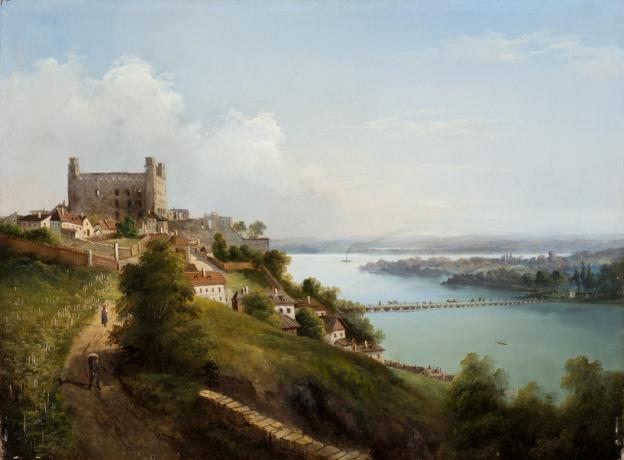His works also evince the influence of older movements, as there is, for instance, a conspicuous closeness to the heroic landscapes of the French Claude Lorrain. What he painted were, apparently, academic compositions that followed the traditions, while his sketches and studies feature all those new endeavours that marked the most recent developments in landscape painting, which was then emerging as a genre in its own right. It is believed that, like his contemporaries, he made his paper-based works on location, before the very motif represented, and went on to work out the entire composition in his studio.
He started his career in Kolozsvár (Cluj) and Pest, where he studied to be an engineer, as there was no institutionalized artist training in the country at the time. In 1822 he continued his studies at the academy of Vienna, and this was where the desire to travel to Italy arose. He arrived in Rome in 1832. He received a great many commissions over the years, chiefly from aristocrats and monarchs, mostly for Biblical and mythological scenes, though Markó was finding his own voice in the representation of landscapes. He was equally keen on scenes from the life of common people.
He worked in Pisa, and then in Florence, for a long time, and sent paintings to the exhibitions of the Pest Art Society. In 1848 he moved to the Villa l’Appeggi, near Florence. His students included Italians, as well as his own children, Károly Jr, András, Ferenc and Katalin. He also played host to Hungarians, among them Mihály Kovács, József Molnár and Antal Ligeti; that latter went on to be—along with Károly Telepy—the most faithful heir of Markó’s approach to the landscape.
The walnut ink landscapes he made in the 1850s completely departed from the original view with their freely swirling lines; they are not sketches but the confident, mature works of an artist who records quick impressions of the land in an almost routine manner. In a sign of an inner conflict, the composition method of his large paintings follow the academic rules with what is almost the precision of an engineer.
He visited Hungary in 1853, where he was welcomed by enthusiastic artists and critics. The paintings he made in his native country are among the most beautiful representations of the Great Hungarian Plain. After his death, in 1872, he was awarded a great honour, when one of his self-portraits, the donation of his son, Károly Markó the Younger, became a part of the portrait gallery of Florence’s Uffizi Gallery. His works can be found, among other places, in the public collections of Vienna, Bratislava, Kosice, Barcelona, Copenhagen and Mexico City.
The works on view were selected by Orsolya Hessky, mostly from the Kovács Gábor Collection, with the addition of three pieces from Cluj-Napoca’s Museum of Fine Arts, and paintings and graphic works from the Hungarian National Gallery.



